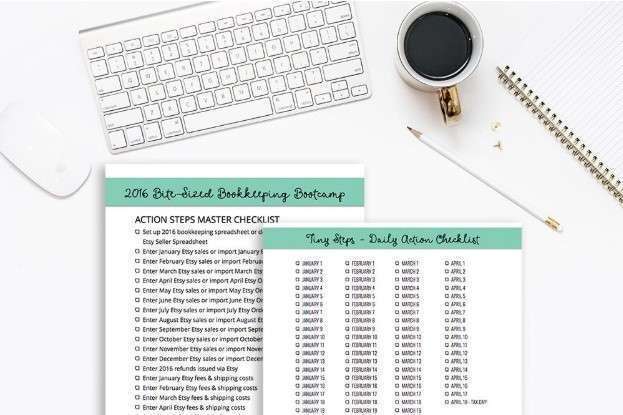Q16-6SE Computing cost of goods sold, me .. FREE SOLUTION


You might also keep an inventory of parts or materials for products that you make. It is important to note that these answers can differ when calculated using the perpetual method. When perpetual methodology is utilized, the cost of goods sold and ending inventory are calculated at the time of each sale rather than at the end of the month. For example, in this case, when the first sale of 150 units is made, inventory will be removed and cost computed as of that date from the beginning inventory.
Journal entries are not shown, but the following discussion provides the information that would be used in recording the necessary journal entries. Each time a product is sold, a revenue entry would be made to record the sales revenue and the corresponding accounts receivable or cash from the sale. The LIFO costing assumption tracks inventory items based on lots of goods that are tracked in the order that they were acquired, so that when they are sold, the latest acquired items are used to offset the revenue from the sale. The following cost of goods sold, inventory, and gross margin were determined from the previously-stated data, particular to perpetual, LIFO costing. The cost of goods sold, inventory, and gross margin shown in Figure 10.15 were determined from the previously-stated data, particular to perpetual FIFO costing.
How to Analyze COGS?
If you subtract the cost of goods sold from total revenue, you’ll get the gross profit figure. If your business sells products, you need to know how to calculate the cost of goods sold. Calculating the cost of goods sold (COGS) for products given the following information for a retailer, compute the cost of goods sold. you manufacture or sell can be complicated, depending on the number of products and the complexity of the manufacturing process. Your business inventory might be items you have purchased from a wholesaler or that you have made yourself.

That is to say that the decreasing COGS to Sales ratio indicates that the cost of producing goods and services is decreasing as a percentage of sales. Thus, by calculating COGS, various stakeholders of your company like managers, owners, and investors can estimate your company’s net income. Gross Profit is an important metric as it indicates the efficiency with which your business operates. It lets you know how efficiently your business is utilising its labour and raw materials to manufacture its finished products. If the per-unit selling price is greater than the per-unit cost of the product, then your business has earned profits. While if the per-unit selling price is less than the per-unit cost of your products, this means your business has suffered losses.
Everything You Need To Master Financial Modeling
Therefore, the ending inventory and cost of goods sold would be different as against the periodic inventory system. Thus, total purchases at the end of the accounting period are added to the opening inventory to calculate the cost of goods available for sale. Then, in order to calculate COGS, the ending inventory is subtracted from the cost of goods available for sale so calculated. Such calculation of COGS would help Benedict Company to plan purchases for the next financial year. In addition to this, the company can also determine the cost for each of its product categories and compare such costs with sales in order to determine the selling margin. You’ll typically find the cost of goods sold on the line directly underneath total revenue when looking at a company’s income statement.
Inventory includes the merchandise in stock, raw materials, work in progress, finished products, and supplies that are part of the items you sell. You may need to physically count everything in inventory or keep a running count during the year. The COGS calculation process allows you to deduct all the costs of the products you sell, whether you manufacture them or buy and re-sell them.
Cost of goods sold: Revenues
Accordingly, goods sold on October 18, 2018 would comprise of purchases made on October 18, 2019 would comprise of purchases made on October 8, 2019 and October 14, 2019. That is to say, the Perpetual Inventory System records real time transactions of the inventory purchased or sold using an inventory management software. That is, this method of inventory management records the sale and purchase of inventory thus providing a detailed record of the changes in the inventory levels. This is because the inventory is immediately reported with the help of management software and an accurate amount of inventory in stock as well as on hand is reflected. Furthermore, under this method, there is always a chance of committing an error due to improper entry or failure to prepare or record the inventory purchased.
- The LIFO costing assumption tracks inventory items based on lots of goods that are tracked, in the order that they were acquired, so that when they are sold, the latest acquired items are used to offset the revenue from the sale.
- Harold Averkamp (CPA, MBA) has worked as a university accounting instructor, accountant, and consultant for more than 25 years.
- Based on the data given for the two companies, determine the business type of each one.
- In addition to this, excess inventory could also result in additional costs for the business in terms of insurance, storage, and obscene.
- The IRS allows several different methods (FIFO or LIFO, for example), depending on the type of inventory.
- The differences in timing as to when cost of goods sold is calculated can alter the order that costs are sequenced.
Use QuickBooks’ Cost of Goods Sold Calculator to calculate the direct costs related to the production of the goods sold in a company. In this case, we will consider that Harbour Manufacturers uses the perpetual inventory system and FIFO method to calculate the cost of ending inventory and COGS. Merchandising and manufacturing companies generate revenue and earn profits by selling inventory.
Marketing expenses
In this case let’s consider that Harbour Manufacturers use a periodic inventory management system and LIFO method to determine the cost of ending inventory. From the above table, we can calculate the cost of ending inventory of 6000 units and cost of goods available for sale (beginning inventory + purchases) of $43,900 (2000 units @ $4.00 + 6000 units @ $4.40 + 2,000 @ $4.75). For companies attempting to increase their gross margins, selling at higher quantities is one method to benefit from lower per-unit costs. The gross profit helps determine the portion of revenue that can be used for operating expenses (OpEx) as well as non-operating expenses like interest expense and taxes.




